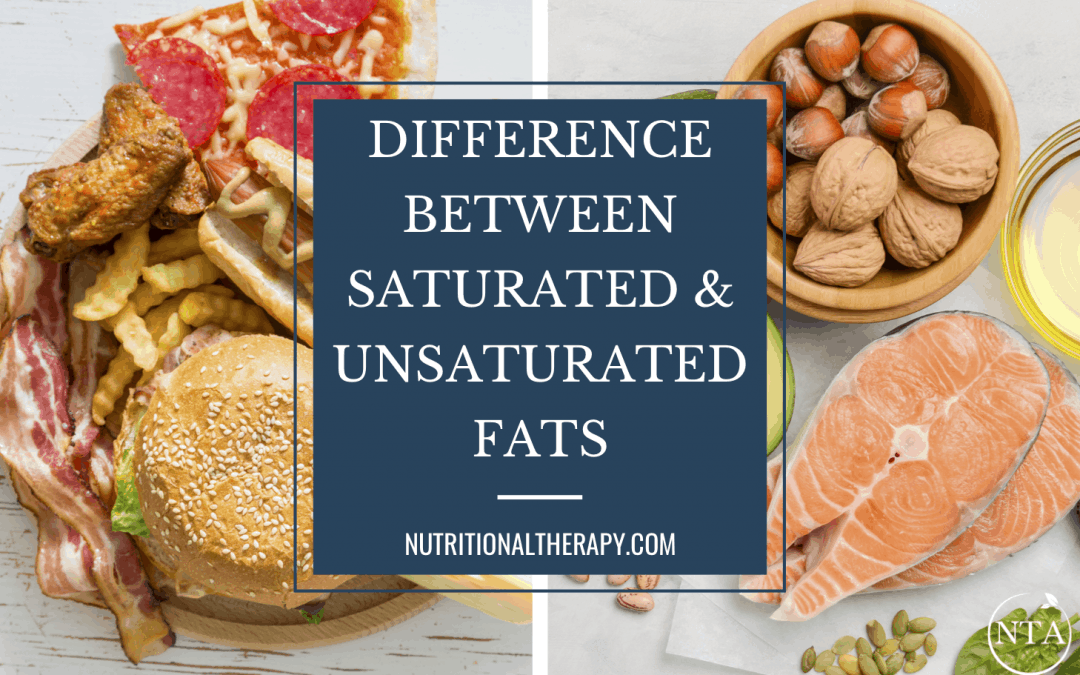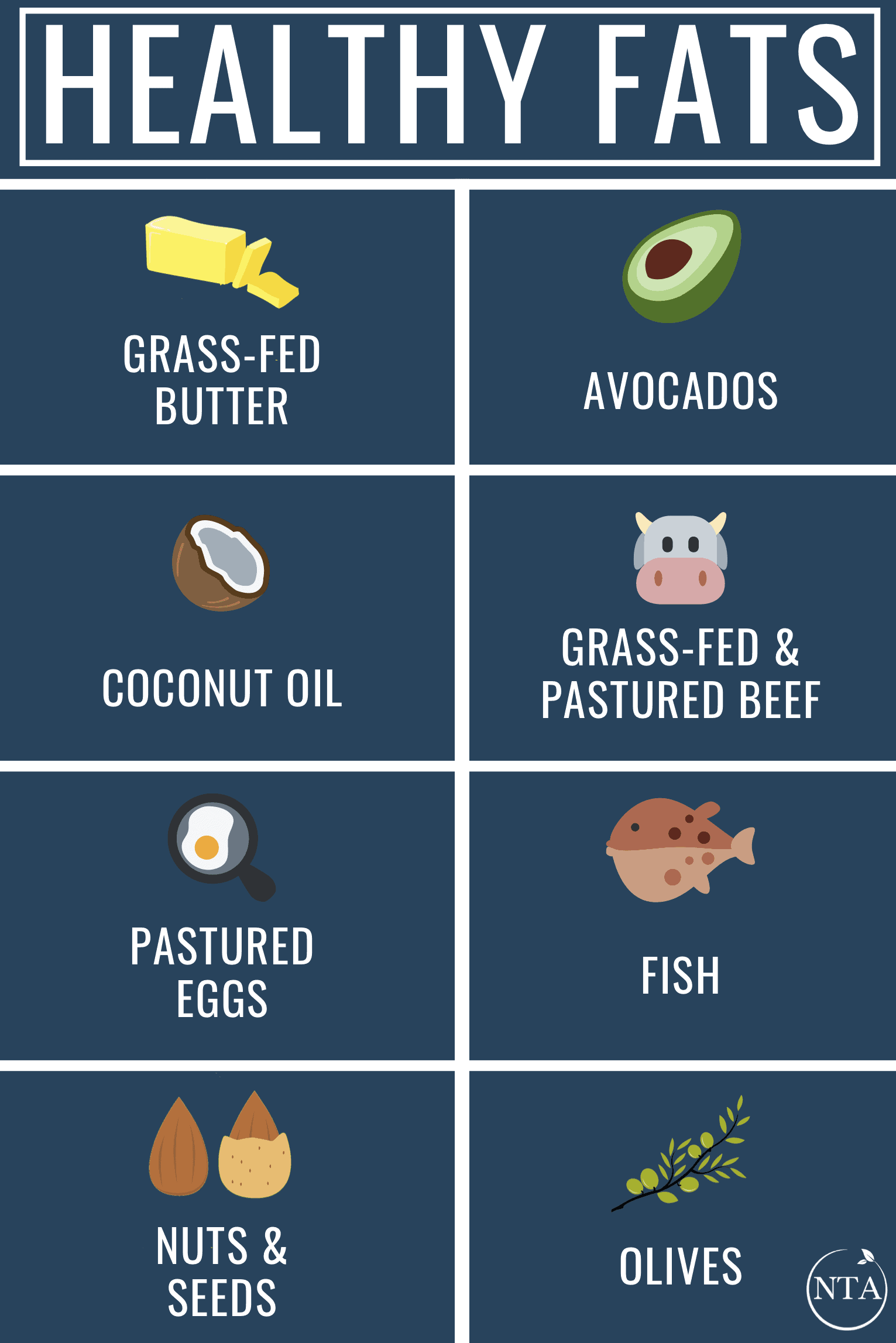
The Difference Between Saturated and Unsaturated Fats: Are Fats Good or Bad?
Blog
The Difference Between Saturated and Unsaturated Fats: Are Fats Good or Bad?

We enjoy delicious olive oil and balsamic dressing on our salads, dip cut veggies into lemon tahini, and savor the taste of slow roasted lamb with potatoes and carrots. We love fat! But, how do types of fats differ? What’s the difference between saturated and unsaturated fat? First, let’s talk function.
Why are fats important?
Fats are crucial for numerous body functions and structures. For example, the fat in our food…
- Helps us absorb fat-soluble vitamins A, D, E, and K
- Improves the taste and enjoyment of food
- Increases satiety
- Helps regulate the speed we digest food
- Provides an important source of high caloric energy that is ideal for long, low-intensity activity
- Is needed to build cell membranes and certain hormones
- Serves as a protective lining for the organs of the body
Saturated vs unsaturated fat?
There are three main classes of fats that we will ideally consume. Technically they are called “fatty acids” and are identified by their degree of “saturation.” Saturation refers to whether or not the carbon atoms in each fat molecule are attached to hydrogen atoms or attached to other carbon atoms with double bonds.
In order to really understand the difference between saturated and unsaturated fats, we have to take a quick dive into chemistry! This won’t be painful, we promise!
Saturated fatty acids
Saturated fats are the most stable class since they lack double bonds between carbon atoms and have the maximum number of bonded hydrogen atoms. This class of fats is usually found in animal products and tropical oils, is solid at room temperature, does not go rancid easily, and is the safest choice for cooking. They are saturated with hydrogen! Hence the name, saturated fat.
Monounsaturated fatty acids
The first form of unsaturated fat we’ll mention are monounsaturated fats. They are less stable than saturated fats since they have one (mono) double bond and less hydrogen atoms. Hence, they are less saturated with hydrogen. This class of fats is found in olives, avocados, and various nuts, and tends to be liquid at room temperature. Monounsaturated fats are safe for low-temperature cooking but should not be used with higher heat. They should also be stored in dark containers to avoid going rancid.
Polyunsaturated fatty acids
Polyunsaturated fats are the second form of unsaturated fat. They have two double (poly, or more than one) bonds and even less hydrogen and saturation. Because of this, it makes these fats very unstable and highly reactive to light, heat, and oxygen. They should not be used for cooking and always stored away from heat and light to help prevent rancidity. Polyunsaturates can be found in fish, flax, nuts, and seeds, and are best eaten raw. These fats are not suitable for cooking. However, they are incredibly important for optimal physiology and should be eaten daily if possible.
What are healthy fats?
It’s important to understand that none of these fat classes are “good” or “bad” per se. Each type serves an important purpose for the body and have pros and cons depending on the context. It’s also key to understand that fat containing foods usually include a combination of saturated, monounsaturated, and polyunsaturated fats, so not just one class. Lard, for example, a fat commonly thought of as saturated, actually contains more monounsaturated than saturated fat.
Healthy Fat Sources:
- Grass-fed butter: 7 grams saturated fat/tablespoon (read more about the benefits here)
- Avocados: 14 grams of monounsaturated fat/cup (read more about the benefits here)
- Coconut Oil: 12 grams of saturated fat/tablespoon
- Grass-fed, pastured beef: Contains a balanced amount of saturated and monounsaturated fats
- Pastured eggs: A balanced source of all fats including Omega 3 and 6 compared to conventional eggs (learn more here)
- Wild-caught Fish: Varies in species, generally contains lower amounts of saturated fats and higher amounts of Omega 3 (learn more here)
- Nuts and seeds: 12 grams of saturated fat, 20 grams of polyunsaturated fat, 38 grams of monounsaturated fat/cup of mixed nuts
- Olives: 8 grams of monounsaturated fat, 1.42 grams of saturated fat, 0.91 grams of polyunsaturated/10 olives (learn more here)

Getting the most out of your fats
The ability to break down fats is equally as important as incorporating a variety of fats into the diet. The pH of the stomach also plays a factor in the ability to properly absorb fats. Meals should be consumed in a parasympathetic or calm state to encourage the production of hydrochloric acid (stomach acid). Hydrochloric acid is necessary to assimilate nutrient absorption.
Proper gallbladder function is also key in the assimilation of fat. Those who suffer from gallstones or have had their gallbladder removed may benefit from consuming bile salts to help break down fats.
Summary
Not all fats are created equal. Our bodies require a diverse variety of fats on a daily basis to be able to see their full benefit. Consuming fats with foods rich in fat-soluble vitamins A, D, E, and K can help to absorb them. Each persons fat needs are unique and bio-individual. Therefore, they should work closely with a physician, NTP, or NTC to determine what fats are best to consume for their body. The important thing to remember is diversity. Aim to eat a variety of types of fat in your diet if at all possible. And, regardless of the class of fat, they are not to be viewed as “good” or “bad”. Consuming all types of fats are necessary for optimal health.

Join us for a Live Webinar with one of our Instructors and Admissions Advisors!
During this call, you’ll explore and learn:
- How to create a rewarding career in holistic nutrition that will give you the confidence and competence to replace your full-time income (whether you’re new to nutrition or or using it to enhance your current services)
- How our unmatched education and instructor support sets our NTP program apart from other nutrition programs
- How graduates are successfully using their education and the many career opportunities available to you
- If the NTP program is the right fit for you and how to move forward in financing your education

